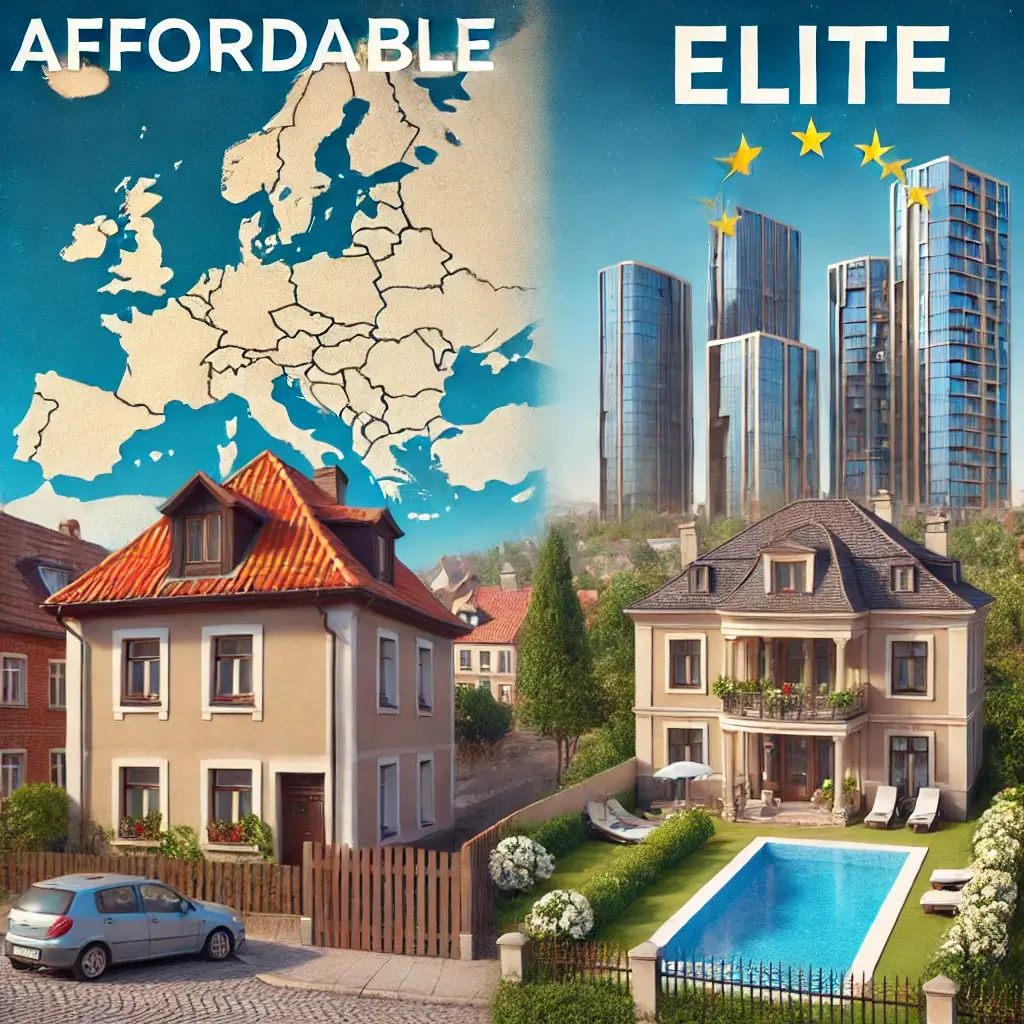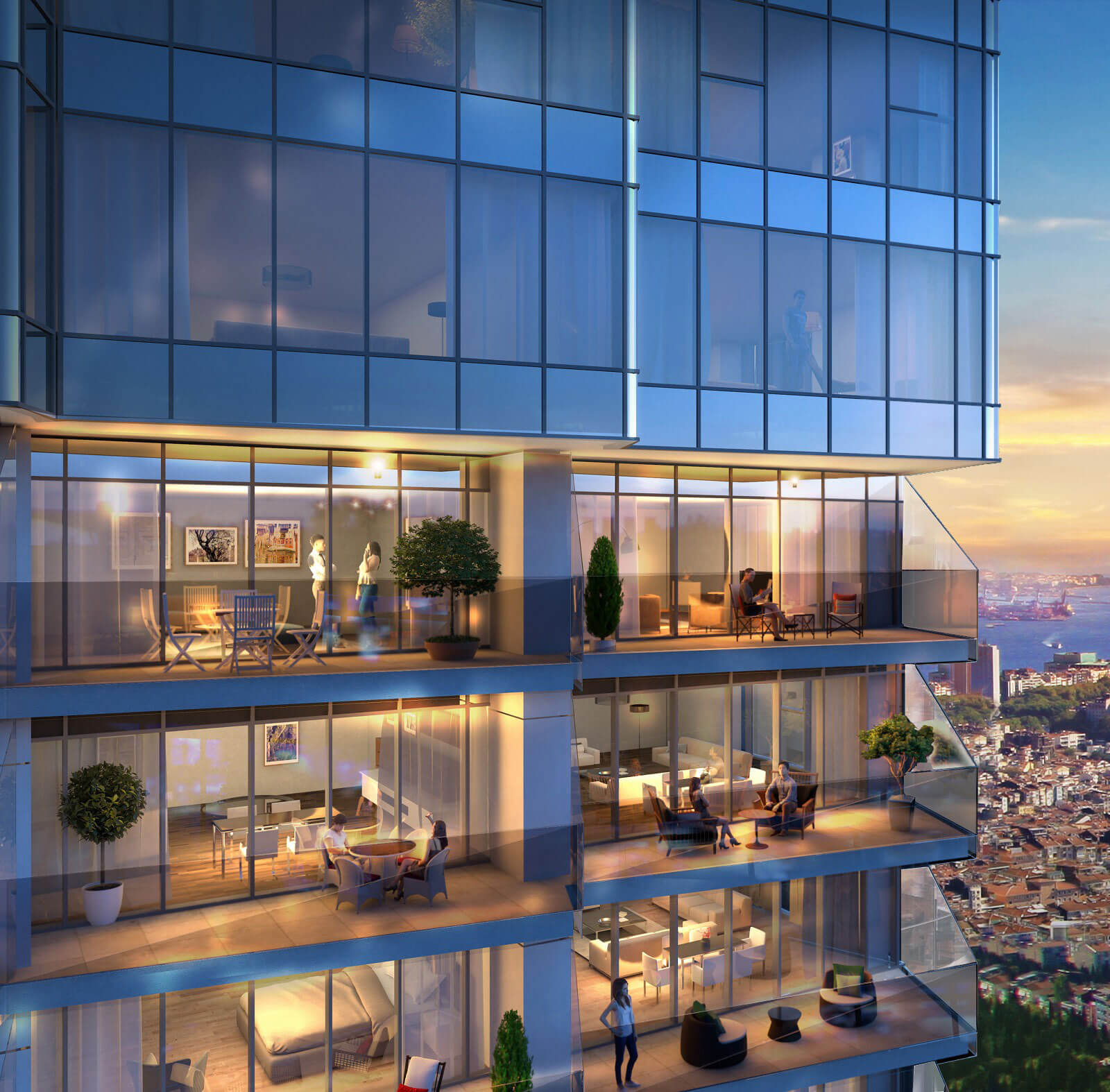The most affordable and most expensive countries in Europe: change in housing prices in 2024


After the crisis, the real estate market in Europe showed stable and confident growth until 2020. Then came the Covid-19 pandemic, a resurgence in 2021, a sharp rise in 2022 and a decline in 2023.
And what awaits us in the future? We talk about the cost of housing in Europe and where you can find the most affordable apartments.
International consulting company Deloitte presented a report on the state of the new housing market in Europe in 2023.
This study included 24 European countries and 69 cities. Israel is also included in the list, despite the fact that it is not located in Europe, since it is a member of the association.
Prices for new buildings in Europe
New buildings in Israel have become the most expensive in Europe, the average price per square meter reached €5,439. In second place is Austria, where the price per square meter is €4,920, maintaining its position compared to 2022. Germany closes the top three, with a price of €4,700 per square meter.
The cheapest housing can be found in Bosnia and Herzegovina (€1,315 per sq. m.), then in Greece (€1,463) and Romania (€1,504). These countries continue to attract the attention of those looking for more affordable housing options in Europe.
Over the past year, the largest increase in prices for new buildings was recorded in Hungary, where the square meter increased in price by 13.3%. Also, outpacing price growth is observed in Poland (+12.2%) and Portugal (+11.5%). Overall, new building prices increased in 15 out of 24 countries.
The biggest price drop was recorded in Italy, where the cost per square meter fell by 10.7%. There was also a decline in Israel, where prices fell by 4.6%.
The most expensive cities
Paris tops the list of the most expensive cities, with a new square meter costing an impressive €14,900. Tel Aviv, which took first place in 2022, is now in second place with a price of €13,886, followed by Munich with a price of €10,900 per square meter. In three other European cities, prices range from €7,500 to €10,000: London (€8,018), Amsterdam (€7,850) and Frankfurt (€7,700).
This year, new buildings in Budapest have become more expensive than in other European capitals, with prices rising by 13.9%. Among non-capital cities, the largest price increase has been seen in Marseille, where the increase was a significant 23.6%.
Rent prices in European cities
Inner London, excluding the suburbs, was the most expensive city in Europe for rent at €33.8 per square metre. Second and third place went to Dublin (€31.5) and Paris (€31.3).
Ten other European cities have rents of €20 per square metre. These include Barcelona (€30.6), Amsterdam (€27.3), Oslo (€26.3), Madrid (€25.4), Outer London (€23.7), Copenhagen (€22.4), Trondheim (€21.2), Munich (€20.8), Galway (€20.1) and Bergen (€20.1).
The cities with the lowest rents are: Patras (Greece) - €6.3, Burgas (Bulgaria) - €6.9, Turin (Italy) - €7.3, Thessaloniki (Greece) - €7, 6, Varna (Bulgaria) - €7.8 and Brasov (Romania) - €8.4.
Although Burgas was included in the list of cities with the lowest rents, it became the leader in terms of growth, increasing by 125.8%. Rents also increased in other cities in Bulgaria: in Sofia and Varna they increased by 98.1% and 66.8% respectively. This happened after Bulgaria joined Schengen and the Eurozone.
The leading growth was also recorded in Manchester (+51.4%), Porto (+35.6%), Inner London (+27.3%), Lisbon (+24.8%), Alicante (+21.7%) and Outer London (+21.3%). At the same time, in some cities rent even became cheaper: in Lyon prices fell by 10.5%, in Oslo by 6.1%, and in Trondheim by 6%.
Investor Priorities
The country that saw an increase in construction activity last year was Bosnia and Herzegovina, although this market does not attract significant interest in the global economy.
Europe, especially in large cities, continues to face housing shortages. In response to this situation, governments are increasingly regulating the rental market, seeking to create a more sustainable and affordable housing infrastructure.
Investors are increasingly turning their attention to the build-to-rent segment, which experienced a real boom in 2023. Developers are adapting their projects to the modern requirements of tenants, creating residential complexes with amenities such as gyms and co-working spaces. As long as city dwellers continue to prefer renting, this type of investment will continue to increase in popularity and volume.
Forecast for the second half of 2024
Deloitte analysts predict that in the second half of 2024, real estate prices will continue to rise, while demand will decline, indicating that the market will continue to move in the same direction as a year ago.
By the end of 2024, housing prices will increase in most countries. The only exception will be France, where prices will continue to fall further. At the same time, prices will remain at the same level in Austria, Croatia, Bulgaria, Denmark, Serbia, Slovakia and the UK.
As for rental prices, they will increase even more in most European countries. The exceptions are Austria, Bulgaria, Croatia, Denmark, Poland, Romania, Serbia and the UK, where, according to experts, there will be little change in rent.
New trends in real estate
The modern real estate market is actively changing under the influence of new trends, among which the emphasis on environmental friendliness and digitalization stands out. According to Deloitte, most buyers are more often focused on housing with low energy consumption and have an impact on the environment.
Tightening environmental standards are becoming the norm, and this leads to an increase in the number of properties with green areas. Developers are increasingly using environmentally friendly materials and technologies, such as solar panels and other energy-efficient systems. This not only meets the requirements of the times, but also corresponds to the growing interest of consumers in ecology.
In addition, there is a gradual transition to the digital plane. Technologies are actively being introduced into the buying and selling processes, potential buyers, especially those who are abroad, increasingly prefer virtual tours of their place of residence. This allows them to get a complete picture of the property without having to be present in person. Moreover, signing contracts is becoming more convenient and accessible, since physical presence is no longer required to conclude a transaction.
Thus, new trends in the real estate sector include fundamental responsibility and digital innovations that make the market more adaptive to modern requirements and buyers’ expectations.








